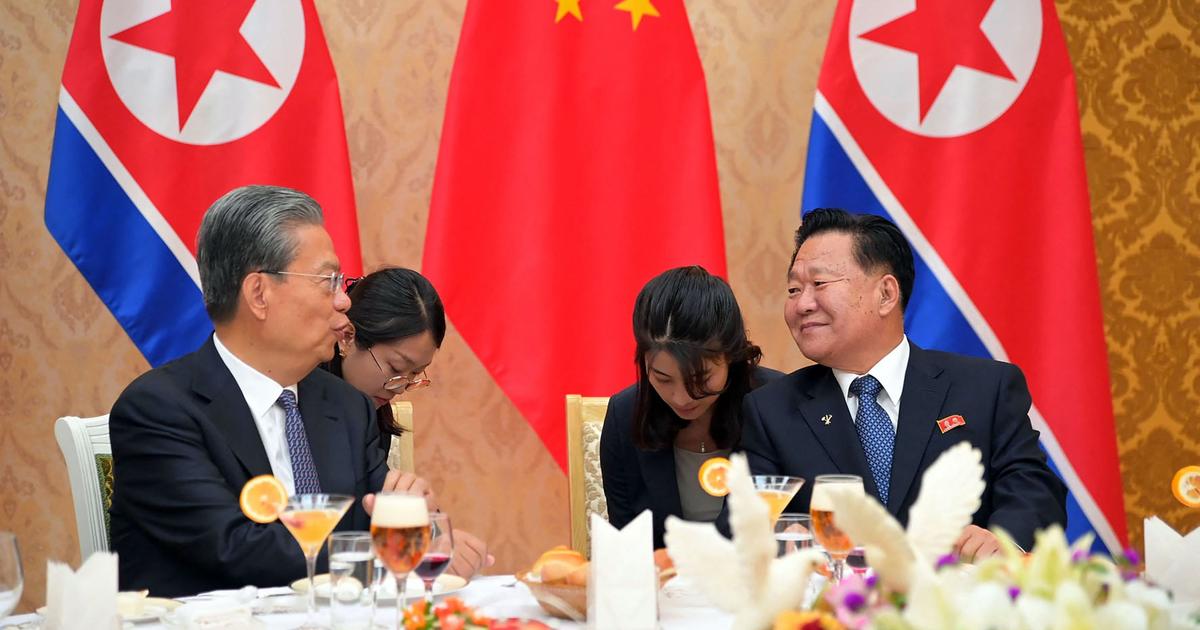Enlarge image
Environmentalist Ma: "When it comes to air, everyone is the same"
Photo: [M] Robin Utrecht / action press
In the meeting room of his organization, Ma Jun projected the IPE website onto a screen, a pool of environmental data that is unique on the Chinese Internet. He clicks through a map, you can sort it according to water quality, according to PM 2.5, PM 10 or CO2 pollution, zoom down to the level of individual factories. "Today we track 5,000 different sources every day and thus receive three million data sets from different companies," says Ma, "because China is now the first country to oblige its biggest polluters to publish their readings every hour."
It is the preliminary result of a long struggle.
At first, Ma only collected data that the government had published itself, "because environmental data can be sensitive, at least back then."
The IPE aggregated them and loaded them into specially developed apps that every Chinese person could install on their smartphone in order to visualize the pollution of their environment there as a map.
The transparency ensured increasing public awareness of the problem - and political pressure.
China is responsible for more than a quarter of greenhouse gases
In 2019, China was responsible for 27 percent of global greenhouse gases, more than the next largest emitters, the USA, India, the entire EU, Indonesia, Russia, Brazil and Japan combined.
Over half of the electricity consumed in the People's Republic comes from coal. For a long time, turning away from this source of energy seemed a long way off: half of the coal-fired power plants under construction worldwide will be built in China. In 2020, the country approved more new coal-fired power plants than in 2018 and 2019 combined. And the building frenzy did not stop at national borders either: According to a study by the European Council on Foreign Relations think tank, Chinese banks finance 70 percent of all coal-fired power plants outside of China.
However, this should soon be over: At the end of September, state and party leader Xi Jinping promised the UN General Assembly that China would no longer finance new coal-fired power plants abroad. And in October he announced a massive expansion of solar and wind energy in the country's deserts. One of these mega-projects is already under construction, and upon completion it will have an installed capacity of 100 million kilowatts. According to the South China Morning Post, that is more than the entire renewables portfolio of regional rival India.
Beijing's efforts have a bitter background.
According to the WHO, more than a million Chinese people died in 2016 alone as a result of respiratory illnesses caused by air pollution.
“The pollution of the air is fundamentally different from that of the soil or the water,” says Ma Jun. “If you don't trust the water, you just drink some from bottles.
But when it comes to the air, all people are the same - whether they live in the village or in Zhongnanhai, "the park-like complex next to the Forbidden City in Beijing, which houses the state and party leadership.
The health of its people is also important to authoritarian China
It is a fallacy to believe that authoritarian China can ignore the concerns of its people at will - at least when they reach a critical mass and cannot simply be dismissed as ideologically hostile. In the case of pollution, this is hardly possible for the Communist Party. According to its own narrative, it strives for nothing more than a better life for the Chinese people to enjoy that too - what is all this growth and development supposed to mean? ”says Ma.
It was therefore important for the party to take the lead in the movement. After a particularly bad smog winter in 2013, it not only decided to publish the fine dust pollution, but also adopted a 200 billion euro action plan against air pollution. To Ma's astonishment, the Ministry of the Environment already met the requirement in 2014 to oblige large emitters to publish their measurement data in real time. In 2020, the Environmental Protection Act was expanded to include a passage that stipulates public participation.
"This level of transparency and engagement with multiple stakeholders is not exactly the traditional Chinese approach," says Ma.
“It's something completely new.
And the reason why this is happening in the field of environmental protection, of all things, seems to me to be that there is probably a stronger consensus here than on all other questions. "
In the meeting room of the IPE, Ma clicks through his statistics.
Over the years, the bars decrease, the purple on the maps turns red, orange, yellow, and here and there even green.
The air quality in China's cities has improved noticeably.
Ma says the many new coal-fired power plants got him.
But the truth is also that they are much cleaner than the old ones, which are gradually being taken off the grid.
China has great climate ambitions - but does not always stick to them
Despite the progress made, China takes the position in international negotiations that the developing countries are entitled to higher emission rights than the old industrialized countries.
After all, these have had a massive impact on the environment for two centuries and not just for a few decades.
This principle of “common but differentiated responsibility” has been part of the UN Framework Convention on Climate Change since 1992.
Ma is of the opinion that Beijing is sticking to it primarily in order to secure fair development opportunities for other emerging countries - not so much because the People's Republic itself intends to act accordingly.
Xi has promised that China will reach its maximum carbon footprint by 2030 and be carbon neutral by 2060.
"What really helped China to embark on this path is our self-interest," says Ma.
"This is done for our people, for the health of the Chinese people."
Or maybe Ma would like to believe a little too much in the success of her own struggle.
Not only that the power shortage from September onwards China is currently ramping up coal production again.
Even before that, many local governments tried to handle the environmental regulations more loosely.
In order to stimulate the economy after the pandemic-induced economic slump in early 2020, they waved many projects through in pollution-intensive industries.
And so last winter brought China more smog than in previous years.
Traditionally, the most smoking factories and power plants in the capital will be shut down at the meetings of the National People's Congress and Consultative Conference, which will take place in Beijing in early March.
Members of parliament and citizens enjoy a bright sky, the so-called "lianghui lan", the "blue of the two sessions".
But this year Beijing sank in gray soup even during these important political meetings.















